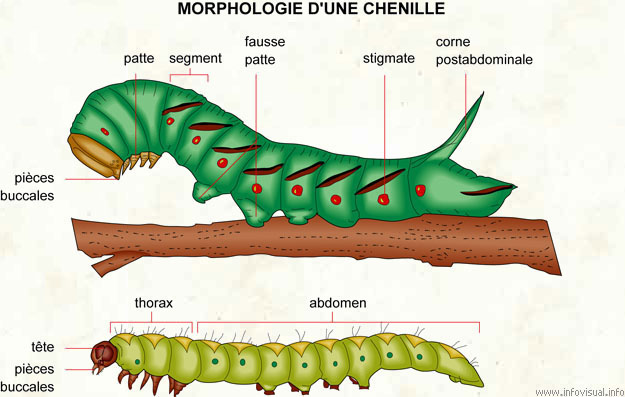Chenille

Pièces buccales: morceaux formant la bouche.
Patte: membre locomoteur.
Segment: une des parties du corps.
Fausse patte: membre de la chenille qui n'est pas considéré comme étant locomoteur.
Stigmate: entrée du système respiratoire.
Corne postabdominale: organe dur de la chenille situé après son abdomen.
Tête: partie antérieure.
Thorax: partie centrale.
Abdomen: partie postérieure.
Photo :

A larva is a juvenile form of animal with indirect development, undergoing metamorphosis for example, insects or amphibian. The larva can look completely different from the adult form, for example, a caterpillar differs from a butterfly. Larvae often have special (larval) organs which do not occur in the adult form. The larvae of some species can become pubescent and not further develop into the adult form (for example, in some newts). This is a type of neoteny. It is a misunderstanding that the larval form always reflects the group's evolutionary history. It could be the case, but often the larval stage has evolved secondarily, as in insects. In these cases the larval form might differ more from the group's common origin than the adult form. The early life stages of most fish species are considerably different from juveniles and adults of their species and are called larvae.
Animation : Cycle de vie de papillon
Merci à YouTube de nous permettre d'observer ce vidéo.